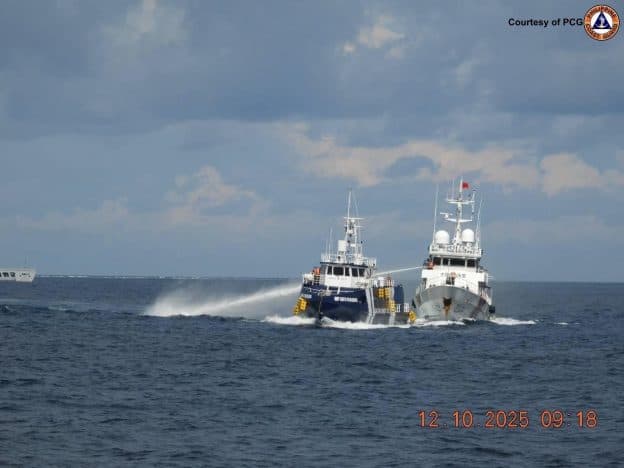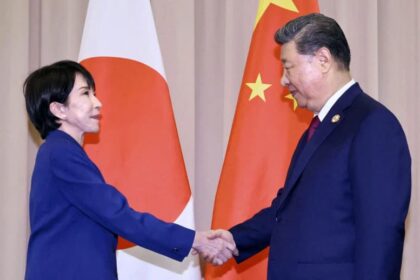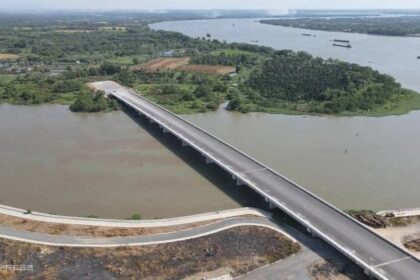A new front in the South China Sea contest
China has opened a new line of effort in the South China Sea. Alongside coast guard blockades, maritime militia swarms, and aerial harassment, Beijing is now working to recast the legal landscape, portraying the Philippines as a rule breaker and itself as the guarantor of order. This technique, often called lawfare, uses legal arguments and domestic statutes not simply to defend policy, but to build the appearance of legitimacy for actions that other states view as coercive or unlawful under international law.
- A new front in the South China Sea contest
- What does lawfare mean in this maritime dispute?
- Manila’s new maritime laws and why they matter
- Beijing’s counter moves, from baselines to a nature reserve
- Pressure at sea and in the air: tactics that skirt safety rules
- Why archipelagic sea lanes and loitering with intent matter
- The legal landscape after 2016 and the nine dash line debate
- How China is changing the rules with its coast guard laws
- What can the Philippines and partners do to counter lawfare?
- What to Know
The latest flashpoint centers on Manila’s drive to codify its maritime rights under the United Nations Convention on the Law of the Sea (UNCLOS). In November 2024, the Philippines enacted the Maritime Zones Act (MZA) and the Archipelagic Sea Lanes Act (ASLA). The first defines maritime zones consistent with UNCLOS, and the second establishes the process for designating routes through Philippine archipelagic waters for foreign ships and aircraft. Manila also incorporated the outcome of the 2016 arbitration against China into domestic law. Beijing responded with legal salvos, declaring straight baselines around Scarborough Shoal and stepping up statements that Philippines measures violate international law. On the water and in the air, Chinese forces pressed the point with tighter patrols, more aggressive intercepts, and incidents that risk collision.
Why Beijing is reframing the narrative
Beijing’s narrative depicts the Philippines as a provocateur whose new laws and patrols destabilize the region. Labeling Manila’s actions unlawful serves multiple aims. It seeks to discredit the Philippines at home and abroad, drain resources through legal disputes, and justify tougher Chinese enforcement by claiming a legal basis. The method does not rely on winning courtroom judgments. It is about creating a record of claims, then enforcing a “new normal” on the sea while others hesitate to escalate.
What does lawfare mean in this maritime dispute?
Lawfare in maritime disputes refers to the use, and sometimes the misuse, of legal tools to advance strategic aims that might otherwise require military force. It can include domestic laws that claim jurisdiction far beyond what others accept, public legal arguments that aim to shape perception, and international filings designed to challenge rivals’ claims. In the South China Sea, the tactic is intertwined with daily operations. Coast guard ships cite Chinese law when blocking resupply runs. Maritime militia boats present as civilian fishers while acting in concert with enforcement operations. Press statements and diplomatic notes cast rivals as lawbreakers, even as force is used to change facts on the water.
For many governments, the central reference point is UNCLOS, which sets the rules for territorial seas, exclusive economic zones (EEZs), continental shelves, and transit rights. Beijing is a party to UNCLOS, as is Manila. The dispute arises from sharply different interpretations of key provisions, as well as China’s claims based on historic rights that the 2016 arbitral tribunal said have no basis in the convention within another state’s EEZ.
Manila’s new maritime laws and why they matter
The Philippines’ MZA and ASLA are central to this round of legal and operational friction. They are intended to clarify rights and duties under UNCLOS and to align national practice with a body of law that many states consider the backbone of maritime order.
What the Maritime Zones Act does
The MZA sets out the Philippines’ maritime zones, including the territorial sea, contiguous zone, EEZ, and continental shelf, using UNCLOS definitions. By writing this into statute, Manila clarifies that it claims an EEZ extending up to 200 nautical miles from baselines, subject to delimitation with neighbors where zones overlap. The act also incorporates the findings of the 2016 arbitration, including that certain South China Sea features are rocks or low tide elevations with no right to generate their own EEZ, and that historic rights claims cannot trump another state’s EEZ under UNCLOS.
What the Archipelagic Sea Lanes Act sets in motion
ASLA sets the framework for designating archipelagic sea lanes. Under UNCLOS, archipelagic states may require foreign ships and aircraft to use specific routes when transiting through their waters, while ensuring safe and continuous passage. For the Philippines, the details matter. Routes and conditions influence where foreign military and coast guard vessels can sail, how close they pass to sensitive areas, and how Manila can enforce safety and environmental rules. Beijing’s recent behavior suggests it wants to influence those choices by normalizing the presence and tracks of Chinese vessels near Luzon and across Philippine archipelagic waters.
Beijing’s counter moves, from baselines to a nature reserve
Within weeks of Manila’s new statutes, China declared straight baselines around Scarborough Shoal. Straight baselines are used in limited settings, such as along deeply indented coasts or fringing islands. Applying them to an isolated maritime feature, then claiming waters inside as internal waters, is widely seen as inconsistent with UNCLOS. The 2016 tribunal classified Scarborough as a rock with no right to its own EEZ, and held that it lies within the Philippines’ EEZ, with traditional fishing access for fishers from both countries.
Scarborough Shoal and the straight baseline gambit
Declaring straight baselines around Scarborough did not alter the legal status recognized by most states, but it did provide Beijing with a talking point to justify tighter enforcement and to push back against Philippine patrols. Chinese statements asserted that Philippine movements violated Chinese law and that control measures were necessary. Manila, supported by many governments, rejected those claims as lacking a basis in UNCLOS.
The new nature reserve and the conservation pretext
In September 2025, Chinese authorities announced plans for a nature reserve on Scarborough Shoal, covering thousands of hectares of coral reef and situated near the lagoon entrance. Conservation language framed the move as environmental protection. Philippine officials called it a bid to entrench administrative control inside their EEZ and to squeeze out Filipino fishers.
Philippine National Security Adviser Eduardo Año condemned the plan and accused China of using conservation as a mask for occupation. He said the move was unlawful and warned that Manila would not accept it.
Eduardo Año, the Philippines’ national security adviser, said China’s Scarborough reserve plan is “patently illegal,” calling it a pretext that paves the way for eventual occupation.
At the Department of Foreign Affairs, Assistant Secretary Marshall Louis Alferez reiterated that Manila has the authority to manage environmental protection within its waters.
Marshall Louis Alferez, a senior foreign affairs official for maritime and ocean affairs, said Scarborough is an integral part of Philippine territory and that only the Philippines can establish protection areas there.
Regional experts describe the reserve as classic lawfare. It creates domestic rules and signage, then forces others to choose between acquiescence and confrontation. One analyst said the goal is to build facts on the sea through administrative control while arguing that the measures are lawful and defensive.
Pressure at sea and in the air: tactics that skirt safety rules
Chinese enforcement has become more dangerous around Philippine features, especially at Second Thomas Shoal, Sabina Shoal, and Scarborough. Philippine vessels have reported collisions, aggressive close approaches, and repeated water cannon blasts. In one 2024 case near Sabina Shoal, a Philippine coast guard ship and a Chinese vessel collided during what Manila described as a routine mission. In early 2025, Chinese ships cut across the bow of a Philippine vessel, then water cannoned and sideswiped a Philippine research boat. In another incident, two Chinese vessels rammed each other while attempting to block a Philippine ship, a sign of the intensity and confusion of close quarter maneuvers.
These activities implicate the 1972 Convention on the International Regulations for Preventing Collisions at Sea (COLREGS), which both governments accept. The arbitral tribunal that heard the Philippines’ case against China emphasized that COLREGS, a safety code applied globally, must prevail over law enforcement requirements when vessels are at risk of collision. Reports from the Spratlys and Scarborough indicate a pattern at odds with COLREGS, where close approaches, dangerous crossing of bows, and water cannon use increase collision risk.
Chinese forces have also pressured Philippine aircraft. Philippine officials described a military helicopter hovering within about 10 feet of a fisheries plane near Scarborough, ignoring radio calls, and other instances where Chinese aircraft shadowed or harassed Philippine patrols over the Spratlys. These actions run against basic aviation safety norms and guidance associated with the International Civil Aviation Organization.
Beijing justifies many of these actions as lawful control in waters it considers under Chinese jurisdiction. A coast guard spokesman repeated that message after confrontations near Sabina Shoal.
Geng Yu, a China Coast Guard spokesman, said a Philippine vessel “illegally entered” waters at a South China Sea reef and that Chinese units “took control measures… in accordance with the law.”
Philippine officials counter that Chinese ships and aircraft are operating inside areas where Manila enjoys sovereign rights under UNCLOS, and that Beijing’s actions are intended to intimidate. One senior Philippine coast guard official said a recent water cannon strike badly damaged a fishing boat and injured a crew member with flying glass. Analysts warn that constant standoffs, combined with tighter presence off Luzon, are meant to normalize Chinese transit patterns. Philippine defense officials describe a pattern of Chinese ships “loitering with intent” along routes that could later be proposed as official sea lanes under Philippine law.
Why archipelagic sea lanes and loitering with intent matter
Archipelagic sea lanes are a specialized regime in UNCLOS that allows an archipelagic state to channel foreign traffic through designated routes. Ships and aircraft in archipelagic sea lanes enjoy a form of continuous and speedy passage, similar to transit passage in straits used for international navigation. The state can set traffic separation schemes and safety rules, but it cannot restrict transit for political reasons or require prior permission.
For Manila, the task is to draw routes that reflect both safety and security. For Beijing, establishing routine tracks through Philippine waters creates a record that can be cited when Manila formalizes its lanes. A constant presence off Zambales, deeper penetrations into Philippine waters, and parallel tracks that line up with likely designations all serve a purpose. If China can claim that routes are normal and widely used, it can argue for their inclusion and conditions favorable to Chinese operations.
Scarborough Shoal sits in a strategic position within the Philippines’ EEZ, near major shipping routes and close to Luzon. Combining legal measures such as baselines and a nature reserve with persistent patrols and air sorties gives China a toolkit to firm up control. Each step is framed as lawful administration or safety, even when other states reject the legal basis.
The legal landscape after 2016 and the nine dash line debate
The 2016 arbitral award in the case brought by the Philippines is final under UNCLOS procedures. It held that China’s claimed historic rights within the nine dash line have no legal effect inside the EEZ of another state. It also determined that none of the Spratly features can generate an EEZ, and that Scarborough Shoal is a rock that cannot generate an EEZ of its own. The tribunal found China had interfered with traditional fishing at Scarborough and had unlawfully prevented Philippine hydrocarbon exploration.
China rejected the award and continued to press its claims, while many states referenced the ruling to align their positions. Since 2019, a stream of diplomatic notes has set out legal views, a process some call a battle of notes. This has clarified where governments stand on maritime zones, historic rights, and the status of features. It has not resolved sovereignty over rocks and reefs, which the tribunal did not decide, but it has narrowed dispute lines.
Freedom of Navigation Operations by the United States and transits by partners underscore support for navigational rights. There is debate over how much these operations change behavior, but they keep attention on the legal issues. European scholars argue that Southeast Asian claimants should continue to align their claims with UNCLOS and press their case through law and diplomacy. They also urge the United States to ratify UNCLOS to strengthen its position.
How China is changing the rules with its coast guard laws
Domestic law is a core part of Beijing’s approach. The 2021 China Coast Guard Law includes provisions that permit the use of force against foreign government ships in waters China deems under its jurisdiction. The law also authorizes the Coast Guard to take enforcement action in ambiguous areas, a stance many states reject as it applies far beyond areas accepted under UNCLOS.
In June 2024, China issued new administrative enforcement procedures for coast guard agencies, often referred to as Order number 3. The regulation allows commanders to detain foreign vessels and personnel for 30 days, or 60 days in complex cases, if they are in waters China defines as under its jurisdiction. That jurisdiction is not clearly defined. The risk, from Manila’s perspective, is that its servicemen, scientists, or fishers could be detained inside the Philippines’ EEZ based on a unilateral Chinese interpretation of the law. Following the new regulation, the China Coast Guard took a more direct role around Second Thomas and Sabina, edging out maritime militia in some operations, which reduces ambiguity about who is responsible while raising the risk of confrontation between state vessels.
These legal tools are used alongside strategic messaging and administrative steps like the Scarborough reserve plan. The sum is a portfolio built to show governance and to pressure others to accept rules written in Beijing.
What can the Philippines and partners do to counter lawfare?
Manila has several avenues to push back without inviting a military escalation. First, it can keep aligning domestic statutes with UNCLOS, publish detailed regulations for archipelagic sea lanes, and document each Chinese action that conflicts with the convention. Detailed incident records, including radar data, radio logs, and video, help demonstrate patterns that breach COLREGS and aviation safety rules.
Second, Manila can continue a policy of transparency. Publicizing incidents and legal arguments undercuts attempts to frame enforcement as routine administration. Philippine agencies have become more active in releasing imagery of encounters and in filing diplomatic protests.
Third, partners can reinforce international law. This includes supporting lawful operations by Philippine agencies within the EEZ, conducting presence operations that affirm rights of navigation, and coordinating diplomatic protests that cite specific UNCLOS provisions. Taking disputes to international bodies, when possible, keeps the focus on law, even when enforcement is difficult.
Fourth, like minded states in Asia and Europe can keep the pressure on through legal and diplomatic channels. Continued notes to the United Nations that reject expansive historic rights and clarify maritime claims help tighten the legal environment. Technical assistance to Southeast Asian coast guards and fisheries agencies strengthens the ability to document incidents and apply lawful procedures.
Fifth, governments can examine economic and trade tools that respond to actions at sea that breach international law. Measured steps, used with care and tied to specific violations, can raise costs for unlawful behavior. Regional training on evidence collection, prosecution of maritime crimes, and environmental monitoring can also improve accountability.
Finally, continued cooperation with allies deters miscalculation. The United States has reiterated that attacks on Philippine armed forces, public vessels, or aircraft in the Pacific, including in the South China Sea, would trigger mutual defense commitments. Japan, Australia, and European partners have increased maritime engagements and capacity building. The aim is not confrontation, but to steady the legal order so that disputes are managed without coercion.
What to Know
- China has intensified lawfare, using legal claims, domestic coast guard powers, and administrative actions to challenge new Philippine maritime laws.
- The Philippines’ Maritime Zones Act and Archipelagic Sea Lanes Act align with UNCLOS and incorporate the 2016 arbitration award.
- Beijing declared straight baselines around Scarborough Shoal and unveiled a nature reserve plan that Philippine officials call unlawful.
- Incidents at sea and in the air have become more dangerous, with actions that conflict with COLREGS and basic aviation safety rules.
- China’s 2021 Coast Guard Law and 2024 enforcement procedures expand detention and force options in areas other states consider Philippine waters.
- The 2016 award rejected historic rights inside another state’s EEZ and classified Scarborough as a rock with no EEZ of its own.
- Persistent presence near Luzon and through archipelagic waters appears aimed at normalizing routes that could influence sea lane designations.
- Countermeasures include legal alignment with UNCLOS, transparent incident reporting, coordinated diplomacy, lawful presence operations, and regional capacity building.












